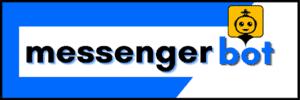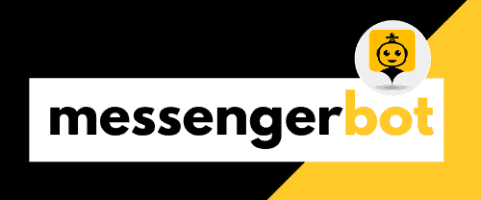Key Takeaways
- Chatfuel’s user-friendly dashboard enables effortless chatbot creation without coding skills, making it ideal for businesses of all sizes.
- Enhance customer engagement with automation capabilities, allowing chatbots to respond 24/7 and improve customer satisfaction.
- Integrate Chatfuel with various APIs and messaging platforms, including WhatsApp, to expand your chatbot’s reach and functionality.
- Utilize rich media support to create engaging chatbot interactions through images, videos, and carousels, boosting user experience.
- Leverage analytics tools provided by Chatfuel to track performance, optimize engagement strategies, and drive better results.
- Explore cost-effective pricing plans, including a trial period for new users to test features before committing financially.
Welcome to our comprehensive guide on the Chatfuel dashboard, the powerful AI tool that is revolutionizing the way businesses engage with their customers through chatbots. In this article, we will delve into the intricacies of how Chatfuel works, exploring its key features and the seamless sign-in process that gets you started on your chatbot journey. We will also uncover the history of Chatfuel and its founders, providing insights into who owns this innovative platform. Additionally, we will analyze Chatfuel reviews to determine if it truly lives up to the hype, and compare its capabilities with other chatbot platforms. If you’re curious about Chatfuel pricing and whether it offers a free option, we’ve got you covered with a detailed breakdown of its plans. Furthermore, we will discuss how chatbots can generate revenue and share successful case studies from the Chatfuel ecosystem. Finally, we will guide you through creating your own chatbot for free using the Chatfuel dashboard and explore the integration of Chatfuel with WhatsApp for enhanced business communication. Join us as we navigate the Chatfuel dashboard and unlock the potential of AI-driven engagement!
How does Chatfuel work?
Chatfuel is an advanced chatbot building platform designed for users with no coding experience, making it accessible for businesses of all sizes. It enables users to create, manage, and deploy chatbots primarily on Facebook Messenger, although it also supports other messaging platforms. Here’s how Chatfuel works:
- User-Friendly Interface: Chatfuel features a drag-and-drop interface that simplifies the chatbot creation process. Users can easily customize their bots using pre-built templates or create their own from scratch.
- Automation Capabilities: The platform offers full automation for customer interactions, allowing businesses to engage with users 24/7. This reduces the risk of missing leads and enhances customer support by providing instant responses to common inquiries.
- Integration with APIs: Chatfuel allows integration with various APIs, enabling businesses to connect their chatbot with external services and databases. This functionality enhances the bot’s capabilities, allowing for personalized user experiences based on real-time data.
- Rich Media Support: Users can incorporate images, videos, and carousels into their chatbots, making interactions more engaging and informative. This multimedia approach can significantly improve user engagement and satisfaction.
- Analytics and Insights: Chatfuel provides analytics tools that help businesses track user interactions and measure the performance of their chatbots. This data is crucial for optimizing chatbot responses and improving overall effectiveness.
- No Coding Required: One of Chatfuel’s standout features is that it requires no programming skills. This democratizes chatbot creation, allowing marketers and business owners to build and manage their bots without relying on technical teams.
- Messenger Bot Integration: While primarily focused on Facebook Messenger, Chatfuel’s capabilities can extend to other messaging platforms, allowing businesses to reach customers where they are most active.
For further reading on chatbot development and automation, refer to sources such as the Gartner IT research and industry blogs like Chatfuel homepage. These resources provide insights into the latest trends and methodologies in chatbot technology and user engagement strategies.
Understanding the Chatfuel dashboard features
The Chatfuel dashboard is designed to provide users with a comprehensive overview of their chatbot’s performance and capabilities. Key features include:
- Bot Builder: The intuitive bot builder allows users to create conversational flows easily, using blocks to define responses and actions.
- Broadcasting Tools: Users can send messages to all subscribers, making it easy to communicate updates or promotions effectively.
- User Segmentation: This feature enables businesses to categorize users based on their interactions, allowing for targeted messaging and personalized experiences.
- AI Training: Chatfuel provides tools to train the AI, improving its ability to understand user queries and provide accurate responses.
- Integration Options: The dashboard supports various integrations, allowing users to connect their chatbot with tools like Google Sheets, Zapier, and more.
Navigating the Chatfuel dashboard sign in process
To access the Chatfuel dashboard, users must complete a straightforward sign-in process:
- Visit the Chatfuel homepage.
- Click on the “Log In” button located at the top right corner of the page.
- Enter your credentials, which may include your email and password or a social media account linked to your Chatfuel profile.
- Once logged in, you will be directed to your dashboard, where you can start building and managing your chatbot.
For more detailed guidance on setting up your first AI chatbot, check out our tutorial on how to set up your first AI chatbot.
Who is the owner of Chatfuel?
Chatfuel, a leading platform for building chatbots on Facebook Messenger, was co-founded by Fedor Pak, who currently serves as the CEO. Under his leadership, Chatfuel has established itself as a significant player in the chatbot industry, empowering businesses to automate customer interactions and enhance user engagement through AI-driven solutions. In a recent interview with AI Tools for SMEs, Pak emphasized the transformative impact of AI in business and highlighted Chatfuel’s commitment to providing accessible tools for companies looking to leverage chatbot technology. The Chatfuel platform allows users to create Messenger bots without coding, making it easier for businesses to connect with their audience effectively.
The history of Chatfuel and its founders
Chatfuel was founded in 2015, emerging from the need for businesses to engage customers more effectively through automated messaging. The founders recognized the potential of AI in enhancing communication and developed a user-friendly platform that allows anyone to create chatbots without technical expertise. Over the years, Chatfuel has evolved, incorporating advanced features and integrations that cater to a diverse range of industries. The platform’s growth reflects the increasing demand for automated customer service solutions, making it a go-to choice for businesses looking to improve their digital communication strategies. For more insights on chatbot development, you can explore how to create your own AI chatbot.
Chatfuel dashboard sign up: Getting started with your account
Getting started with the Chatfuel dashboard is a straightforward process. To sign up, simply visit the Chatfuel homepage and click on the sign-up button. You can create an account using your Facebook credentials, which allows for seamless integration with your Facebook page. Once registered, you will have access to the Chatfuel dashboard, where you can begin building your chatbot. The dashboard is designed to be intuitive, providing users with various templates and tools to customize their bots according to their business needs. For a comprehensive guide on setting up your first AI chatbot, check out our tutorial on setting up your first AI chatbot.
Is Chatfuel Good?
When evaluating whether Chatfuel is a suitable choice for your chatbot needs, it’s essential to analyze user reviews and experiences. The platform has garnered attention for its user-friendly interface and robust features, making it a popular option among businesses looking to enhance their customer engagement through automated messaging.
Analyzing Chatfuel Reviews and User Experiences
Chatfuel reviews in 2025 highlight several key aspects that contribute to its reputation as a leading chatbot platform:
- User-Friendly Interface: Many users appreciate the intuitive drag-and-drop interface, which simplifies the process of building chatbots without requiring coding skills. This accessibility is particularly beneficial for small businesses and startups.
- AI Capabilities: The integration of Chatfuel AI allows chatbots to engage users effectively by understanding and responding to inquiries in real-time. This feature enhances user satisfaction and retention.
- Integration Options: Users frequently mention the ability to connect Chatfuel with various third-party applications, such as Google Sheets and Zapier, which streamlines workflow automation and data management.
- Analytics and Insights: The platform provides detailed analytics, enabling users to track performance metrics and optimize their chatbots based on user interactions. This data-driven approach is crucial for improving engagement strategies.
However, some reviews also point out limitations:
- Limited Advanced Features: While Chatfuel is excellent for basic chatbot functionalities, users seeking more complex features may find it lacking compared to other platforms.
- Dependency on Facebook: As a platform primarily designed for Facebook Messenger, users may encounter challenges if they wish to expand their chatbot’s reach beyond this ecosystem.
Comparing Chatfuel AI with Other Chatbot Platforms
To determine if Chatfuel is the right fit for your business, it’s beneficial to compare it with other chatbot platforms:
- Versatility: While Chatfuel excels in creating chatbots for Facebook Messenger, platforms like Brain Pod AI offer broader capabilities, including multilingual support and SMS functionalities, making them suitable for diverse communication needs.
- Cost-Effectiveness: Chatfuel’s pricing structure is competitive, with a free tier available. However, other platforms may provide more advanced features at similar or lower price points, which could be a deciding factor for businesses with specific requirements.
- Community Support: Chatfuel has a strong user community, but platforms like Brain Pod AI also offer extensive documentation and support, which can be crucial for users navigating chatbot development.
In summary, Chatfuel is a solid choice for businesses looking to create effective chatbots, especially for those new to the field. Its strengths lie in its user-friendly design and AI capabilities, while potential users should consider their specific needs and compare it with other options in the market.
Is Chatfuel Free?
When considering the Chatfuel dashboard, it’s essential to understand its pricing structure. Chatfuel does not provide a completely free plan; however, it does offer a trial period that allows users to engage in 50 free conversations. After this trial, users must upgrade to a paid plan to continue using the service. This model enables businesses to test the platform’s capabilities before committing financially.
Exploring Chatfuel Pricing and Plans
For those interested in pricing, Chatfuel’s plans are structured as follows:
- The Facebook and Instagram plan starts at $23.99 per month for up to 1,000 conversations.
- The WhatsApp plan is priced at $34.49 per month for the same number of conversations.
These pricing tiers make Chatfuel an accessible option for businesses looking to enhance their customer engagement through automated messaging. The Chatfuel dashboard provides various features that can significantly improve user interactions on platforms like Facebook Messenger and Instagram.
Benefits of the Chatfuel Dashboard App for Free Users
Even during the trial period, users can experience several benefits of the Chatfuel dashboard. These include:
- Access to essential chatbot features that allow for basic automation of customer interactions.
- The ability to create and customize bots tailored to specific business needs.
- Insights into user engagement through analytics, helping businesses understand customer behavior.
These advantages make the Chatfuel dashboard a valuable tool for businesses, even for those starting with the free trial. For more detailed information on pricing and features, you can visit Chatfuel’s official website or consult resources like Zapier, which frequently updates comparisons and insights on chatbot platforms.
How do chatbots make money?
Chatbots, particularly those built on the Chatfuel dashboard, can generate revenue through various innovative strategies. Here are ten effective methods:
- Automating Customer Interactions: Chatbots can handle customer inquiries 24/7, reducing the need for human agents and cutting operational costs. This efficiency can lead to increased customer satisfaction and retention, ultimately boosting sales.
- Affiliate Marketing: By integrating affiliate links into conversations, chatbots can promote products and earn commissions on sales generated through these links. This method leverages the chatbot’s ability to recommend products based on user preferences.
- E-commerce Integration: Chatbots can facilitate direct sales by integrating with e-commerce platforms. They can guide users through the purchasing process, recommend products, and even handle transactions, making shopping seamless.
- Subscription Services: Offering premium features or content through a subscription model can be lucrative. Chatbots can provide personalized experiences or exclusive content, encouraging users to subscribe for enhanced services.
- Lead Generation: Chatbots can collect user information and qualify leads, which can then be sold to businesses looking for potential customers. This data-driven approach enhances marketing strategies for various companies.
- Personalized Marketing: By analyzing user interactions, chatbots can deliver tailored marketing messages and promotions, increasing conversion rates and driving sales.
- In-app Purchases: In platforms like social media, chatbots can offer in-app purchases for digital goods or services, providing a direct revenue stream while enhancing user engagement.
- Data Monetization: Chatbots can gather valuable insights from user interactions. This data can be anonymized and sold to companies seeking market research, providing a secondary revenue source.
- Sponsorships and Partnerships: Collaborating with brands for sponsored content within chatbot interactions can create additional income. Brands may pay for exposure to the chatbot’s user base.
- Customer Feedback and Surveys: Chatbots can conduct surveys and gather feedback, which can be monetized by selling insights to businesses looking to improve their products or services.
By leveraging these strategies, chatbots can effectively monetize their capabilities while enhancing user experiences. For further insights, refer to sources such as the Journal of Business Research and industry reports from platforms like Gartner and Forrester, which provide comprehensive analyses on chatbot monetization trends.
Case studies of successful chatbots on the Chatfuel platform
Numerous businesses have successfully utilized the Chatfuel dashboard to create chatbots that not only enhance customer engagement but also drive revenue. Here are a few notable examples:
- Sephora: This beauty retailer uses a chatbot to provide personalized product recommendations and beauty tips, significantly increasing customer interaction and sales through its Facebook Messenger channel.
- H&M: The fashion giant employs a chatbot to assist customers in finding outfits based on their preferences, leading to higher conversion rates and improved customer satisfaction.
- Pizza Hut: By integrating its ordering system with a chatbot, Pizza Hut allows customers to place orders directly through messaging platforms, streamlining the process and boosting sales.
These case studies highlight how effective chatbot strategies can lead to increased revenue and improved customer experiences, showcasing the potential of the Chatfuel AI platform in various industries.
How to Create a Chatbot for Free?
Creating a chatbot for free can be accomplished through several user-friendly platforms that require no coding skills. Here’s a comprehensive guide to help you get started using the Chatfuel dashboard and other tools.
Step-by-Step Guide to Using the Chatfuel Dashboard
- Choose a Free Chatbot Builder:
- HubSpot: HubSpot offers a free chatbot builder that allows you to create and customize chatbots easily. You can select from various templates based on your bot’s purpose, whether it’s for customer support, lead generation, or engagement.
- Chatfuel: This platform is particularly popular for creating Facebook Messenger bots. It provides a visual interface to build bots without coding, making it accessible for beginners.
- Tidio: Tidio combines live chat and chatbot functionalities. Its free plan allows you to create basic chatbots that can handle customer inquiries effectively.
- Define Your Chatbot’s Purpose: Identify the primary goal of your chatbot. Is it to answer FAQs, assist with customer service, or guide users through a sales funnel? Clear objectives will help shape the conversation flow.
- Utilize Templates and Visual Editors: Most platforms, including HubSpot and Chatfuel, offer templates that can be customized. Use these to streamline the creation process. The visual editors allow you to drag and drop elements, making it intuitive to design conversations.
- Customize Conversations: Tailor the chatbot’s responses to reflect your brand’s voice. Add unique questions and responses that resonate with your target audience. Personalization can significantly enhance user engagement.
- Test Your Chatbot: Before launching, conduct thorough testing to ensure the chatbot functions as intended. Check for logical flow, response accuracy, and user experience. Gather feedback from real users to make necessary adjustments.
- Launch and Monitor Performance: Once satisfied with the chatbot’s performance, launch it on your website or social media platforms. Monitor its interactions and gather analytics to understand user behavior and improve the bot over time.
- Continuous Improvement: Regularly update your chatbot based on user interactions and feedback. Incorporate new features or responses to keep the bot relevant and effective.
Chatfuel Dashboard Download: Accessing the Platform on Different Devices
The Chatfuel dashboard is accessible across various devices, ensuring you can manage your chatbot anytime, anywhere. To get started:
- Web Access: Simply visit the Chatfuel homepage and sign in to your account to access the dashboard directly from your browser.
- Mobile Access: While Chatfuel does not have a dedicated mobile app, you can use your mobile browser to log in and manage your chatbot effectively.
- Integration with Other Platforms: Chatfuel can be integrated with various platforms, enhancing its functionality. For example, you can connect it with Facebook Messenger for seamless communication.
For more detailed insights on chatbot creation, you can refer to resources from HubSpot, Chatfuel, and Tidio. These platforms provide extensive documentation and support to help you maximize your chatbot’s potential.
Chatfuel WhatsApp integration
Integrating Chatfuel with WhatsApp can significantly enhance your business communication strategy. By leveraging the Chatfuel dashboard, businesses can create automated responses and workflows that streamline interactions with customers on WhatsApp. This integration allows for real-time engagement, ensuring that inquiries are addressed promptly, which is crucial for maintaining customer satisfaction.
Leveraging Chatfuel for WhatsApp business communication
To effectively utilize Chatfuel for WhatsApp, businesses can set up automated messaging that responds to frequently asked questions, provides product information, and even facilitates transactions. The features of the Chatfuel dashboard enable users to create tailored responses based on user behavior, making interactions more personalized and efficient. This capability not only saves time but also enhances the overall customer experience, as users receive immediate assistance without waiting for human intervention.
Enhancing customer engagement through Chatfuel and WhatsApp
Customer engagement can be significantly improved through the combination of Chatfuel and WhatsApp. By utilizing Chatfuel’s AI capabilities, businesses can analyze customer interactions and adapt their messaging strategies accordingly. This data-driven approach allows for continuous improvement in communication tactics, ensuring that messages resonate with the audience. Additionally, integrating Chatfuel with WhatsApp enables businesses to reach customers on a platform they frequently use, increasing the likelihood of engagement and conversion. For more insights on chatbot integration, check out this guide.







